Table of Contents
In this article, we will provide an overview of the major energy commodities, a list of energy commodities, future market trends, and investment opportunities in this field. So, let’s dive into this article!
What is Energy Commodities?
According to Law Insider, the definition of energy commodities includes electricity, green power, natural gas, methane, and various petroleum-based fuels.
This includes but is not limited to diesel, bio-diesel, unleaded fuel, fuel oil, propane, and other bulk commodities mostly used by the City to heat and cool buildings, power generation, cogeneration, and fuel the City’s fleet.
Overview of Major Energy Commodities
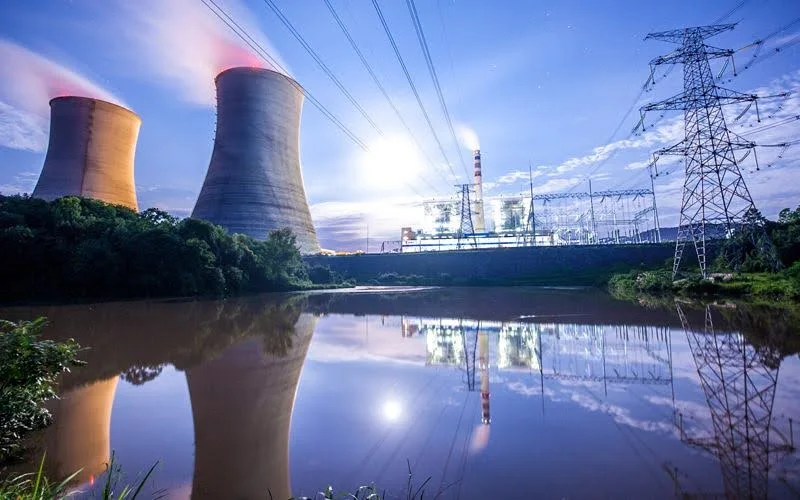
Source: Norgiis Group
Energy significantly impacts our daily lives, affecting the cost of almost everything we use, from groceries and clothing to electronic devices and car fuel.
Energy is important in determining the costs associated with heating and cooling homes, businesses, and other essential buildings.
According to the US Energy Information Agency (EIA), global energy consumption exceeds 125 quadrillion Btu annually and is projected to reach 138 quadrillion Btu by 2050.
The massive scale of this energy commodity becomes even more obvious when we compare it to fossil fuel consumption in the world’s largest economy.
List of Energy Commodities
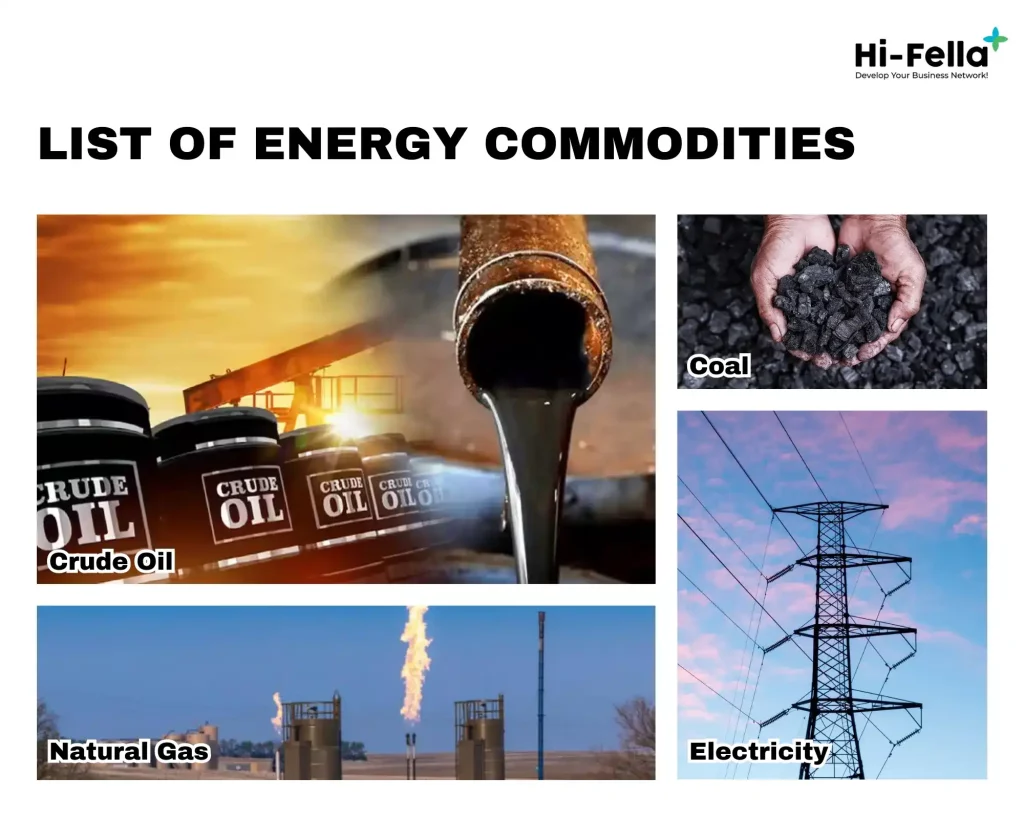
The list of energy commodities covers many essential resources that power our modern world. Here are some of the key components of the energy commodities list:
1. Crude Oil
Commonly known as “black gold,” crude oil is a vital energy source and an essential ingredient in the manufacture of various everyday goods.
Crude oil is the base material for producing fuels such as gasoline and diesel. It acts as the raw material for the petrochemical industry, producing plastics, chemicals, and other essential materials.
Crude Oil Production Trend
The price and accessibility of crude oil exert an important impact on the economic and geopolitical landscape.
According to Enerdata, In 2022, global crude oil production jumped more than 5%, surpassing both 2021 growth and the 2010-2019 average. This increase is driven by economic growth and OPEC+ gradually adjusting production.
The Middle East, North America, and Latin America saw significant production increases, while Africa, Asia, and Europe saw oil production decline.
Despite facing sanctions, Russia managed to increase production by 2.1%. Notable increases occurred in Saudi Arabia, the United Arab Emirates, Kuwait, and Iran, while Nigeria experienced a significant decline in production.
Global Crude Oil Demand
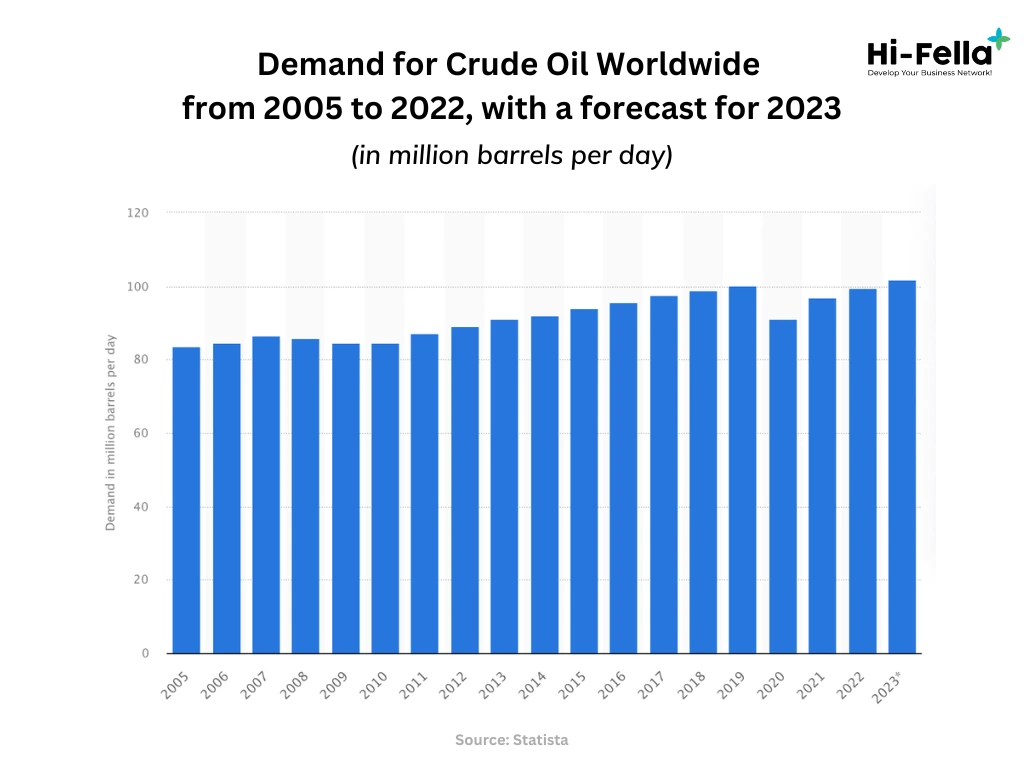
According to Statista, global crude oil demand in 2022 is 99.57 million barrels per day, which will increase to 101.89 million barrels per day in 2023.
The decrease in 2020 is a result of the economic and mobility impacts of the pandemic. Compared to the 2010 daily demand of 84.8 million barrels, the upward trend in demand over the past decade is still evident.
2. Natural Gas
Natural gas is categorized as a fossil fuel energy source consisting of various compounds. The main component is methane, which consists of one carbon atom and four hydrogen atoms (CH4).
In addition, natural gas contains small amounts of natural gas liquids (NGLs), which are considered hydrocarbon gas liquids, along with non-hydrocarbon gasses such as carbon dioxide and water vapour.
Natural Gas Production Trend
According to Enerdata, after rebounding in 2021, global gas production remained stable in 2022. Despite lower demand, production increased globally, with production declines in Russia offset by production increases in North America, the Middle East, China, and Australia.
However, Russia still saw a 12% decline due to reduced exports to Europe, which contributed to a 7.6% decline in EU gas production. Brazil also saw decreases in gas production because of the collapse.
Meanwhile, gas production continued to increase in North America, China, Australia, the Middle East, and Latin America, driven by various factors, including the Vaca Muerta field in Argentina and projects in Mexico.
Global Natural Gas Demand
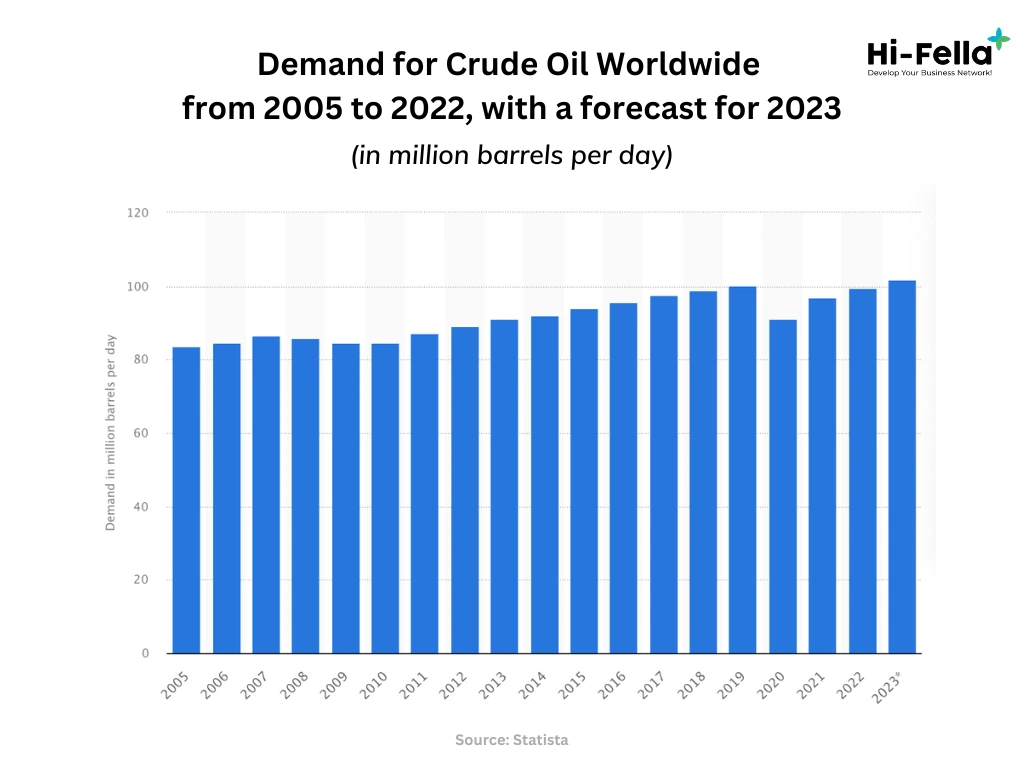
Based on the Statista, by 2050, it is estimated that Asia Pacific will use the most natural gas. In 2021, North America used the most, about one trillion cubic meters (tcm).
However, this is expected to shift as natural gas use in the Asia Pacific is expected to rise from 915 billion cubic meters in 2021 to 1.6 tcm in 2050. Europe is the only place where natural gas demand is expected to continue to fall in the coming years.
3. Coal
Coal is a fossil fuel originating from dead plant material trapped between rock layers. Over millions of years, it transforms into peat and progresses to lignite, sub-bituminous coal, and anthracite coal.
Historically crucial for energy, cavemen used it for heating. During the Industrial Revolution, coal’s use surged to meet growing energy demands. Today, it continues to significantly contribute to the global energy supply and plays a vital role in various industries.
Coal Production Trend
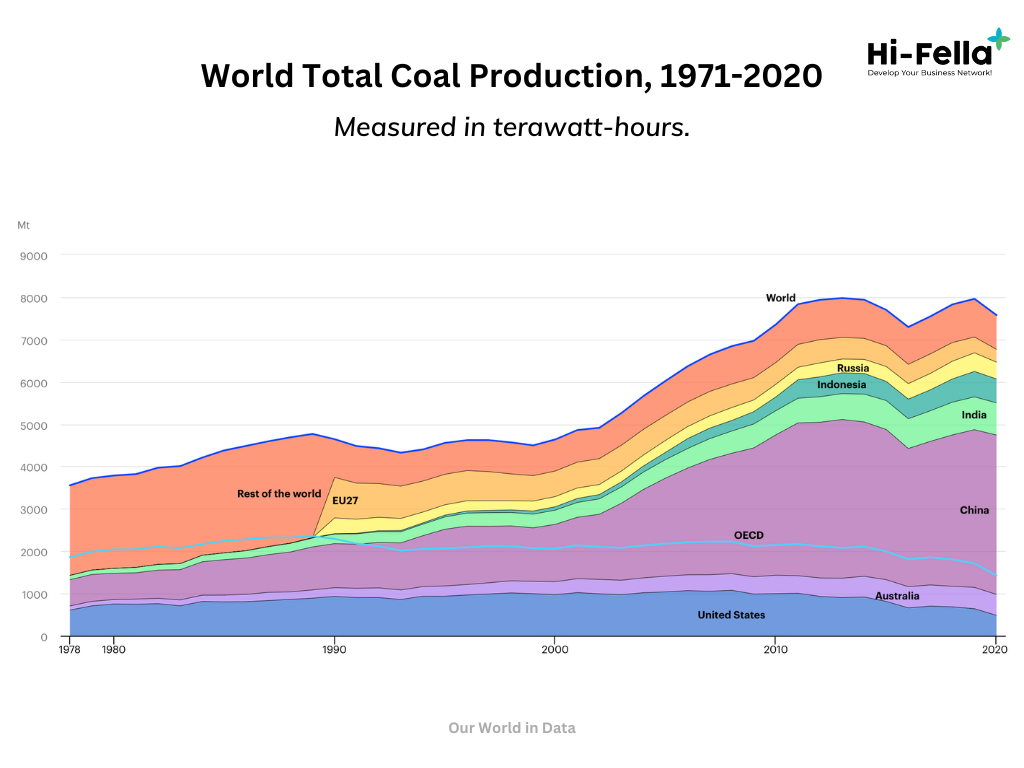
Global coal production decreased by 4.8% in 2020, marking a reversal after three consecutive years of growth. China was the only major producing country to experience an increase in coal production, up by 1.1% over the same period.
The ongoing decline in coal production, observed since the beginning of the century, continued in the United States and the European Union, with significant decreases in Germany, Poland, and Greece.
Additionally, previously rising production in Russia, Indonesia, India, and Turkey has already peaked and is now on a downward trend.
Global Coal Demand
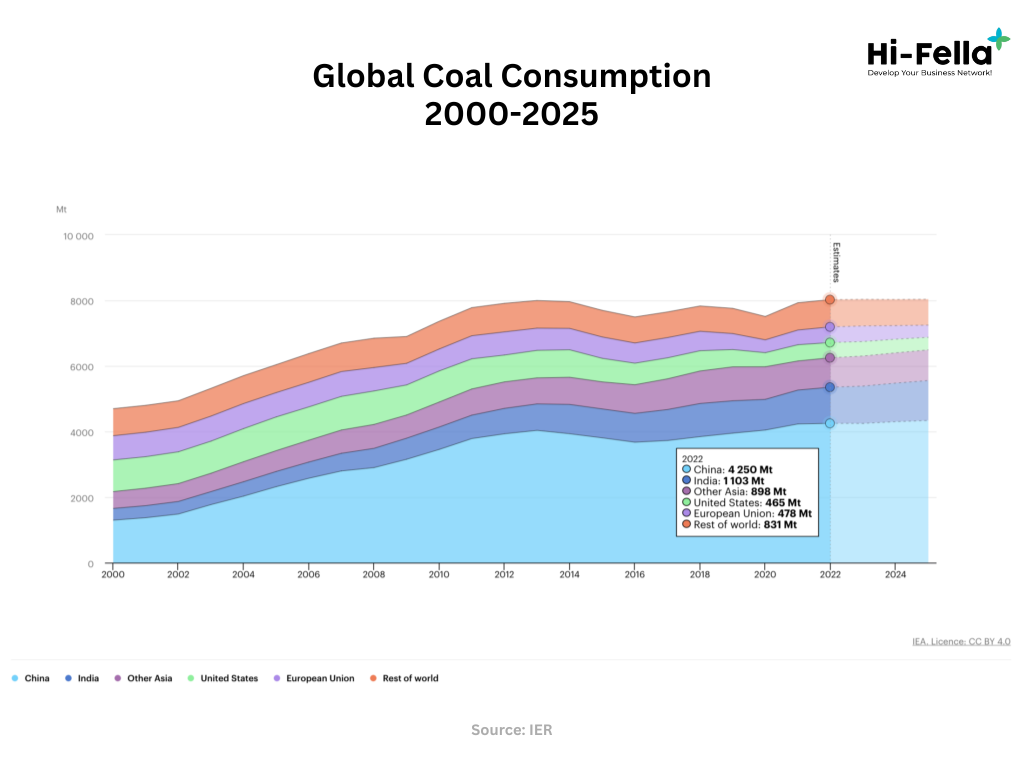
By 2022, soaring natural gas prices are driving a shift towards the more cost-effective energy commodity of coal, with global demand expected to grow 1.2% to more than 8 billion metric tons.
Despite the economic challenges of these rising energy commodity prices, coal use for electricity is expected to increase by 2%, while industrial consumption declines by more than 1%.
Following Russia’s invasion of Ukraine, the IEA predicts global coal demand will reach 8 billion metric tons by 2025, with China leading the way with 53% of coal consumption.
The IEA forecasts 0.7% annual growth for coal consumption in China through 2025, driven by increased reliance on renewable energy.
India’s doubling of coal consumption since 2007 supports global demand, and in Europe, challenges in hydro and nuclear power generation are leading to an increase in coal-fired power generation.
4. Electricity
Electricity is generated through a process that results in the movement of electrical power or charge. It occurs naturally and is one of the most common forms of energy worldwide.
Awareness of electricity dates back thousands of years, with ancient societies being fascinated by electric fish and the observation of static electricity through the friction of objects.
Electricity Production Trend
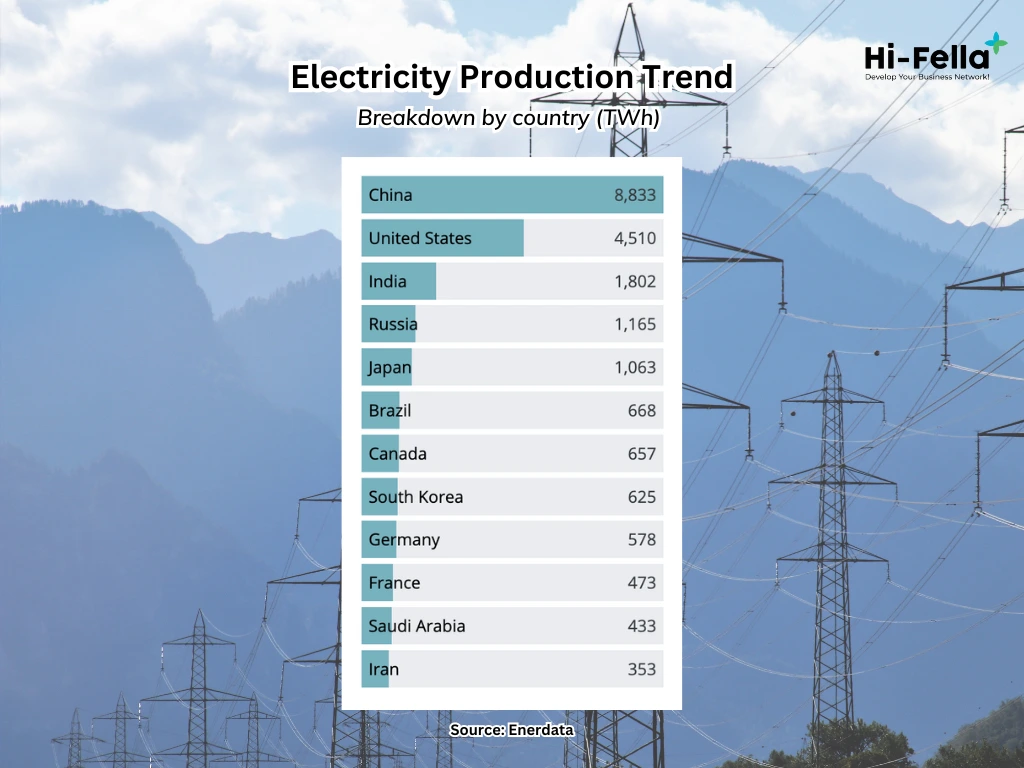
Global power generation increased by 2.3% in 2022, aligning with the 2010-2019 average growth of +2.5% after a 5.7% rebound in 2021. China, India, and the United States drove growth, along with notable increases in Indonesia and Saudi Arabia.
Other regions, including South Korea, Malaysia, Thailand, Japan, Latin America, Canada, and Australia, also grew.
In Africa, power generation was stable, with growth in Algeria and Egypt offsetting declines in South Africa.
In contrast, Europe saw a 2.8% decline, with a 15% drop in France, offset by increased output in Spain and the UK. The war led to a more than 27% decline in power generation in Ukraine, while Russian power generation remained stable.
Global Electricity Demand
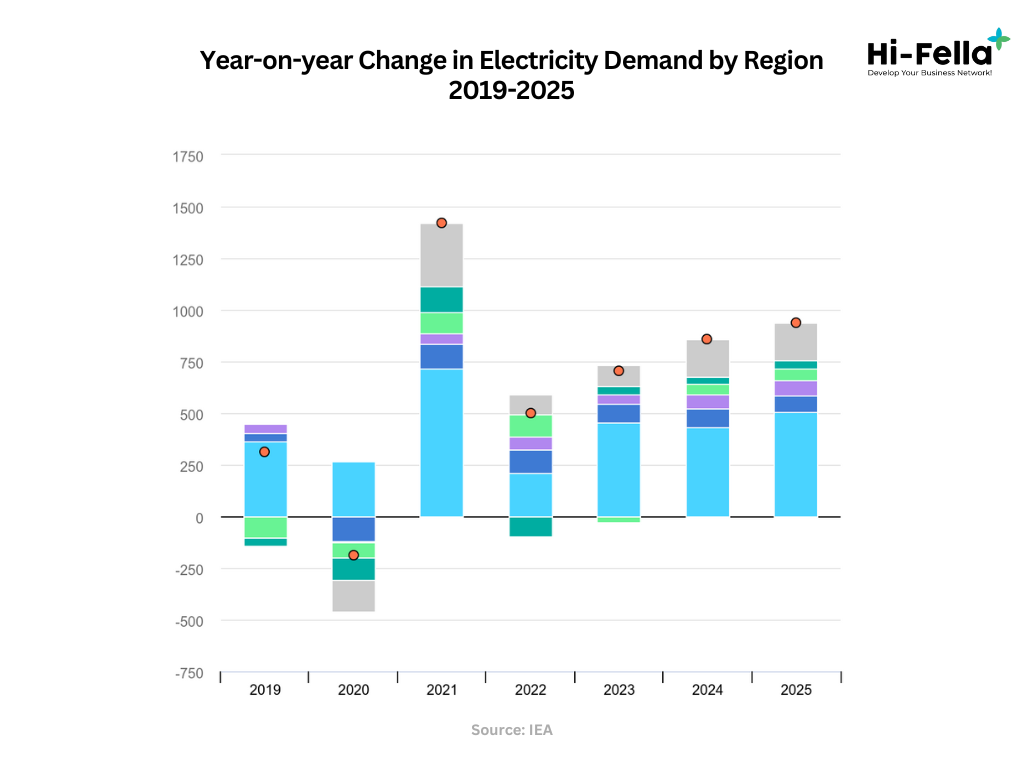
Despite challenges stemming from the global energy crisis triggered by Russia’s invasion of Ukraine, global electricity demand growth only slightly slowed in 2022.
According to IEA, demand increased by almost 2%, slightly below the average growth rate of 2.4% observed from 2015 to 2019.
The global trend to electrify the transportation and heating sectors continues to gain momentum, with surging sales of electric vehicles and heat pumps contributing to growth.
In contrast, electricity consumption in the European Union saw a significant decline of 3.5% year-on-year by 2022, mainly due to the region’s struggle with high energy prices, resulting in a substantial drop in demand among industrial consumers.
Meanwhile, India and the United States experienced an increase in electricity demand, while China’s growth was affected by COVID-19 restrictions.
Investment Opportunities in Energy Commodities
Did you know that investors looking to diversify beyond stocks and bonds often turn to commodities? Here is why:
Reasons to Invest in Energy Commodities
- Diversification
Including energy commodities in a portfolio provides diversification beyond traditional assets like stocks and bonds. Energy markets often have different risk factors and market dynamics, which helps spread risk.
- Global Demand
Energy commodities, such as crude oil and natural gas, are critical to global economic activity. Investments in energy can align with consistent demand for these resources around the world.
- Inflation Hedging
Energy prices are often correlated with inflation. As inflation rises, energy commodity prices can increase, offering a potential hedge against the impact of inflation eroding purchasing power.
- Geopolitical Events
Global events, such as geopolitical tensions or conflicts in major oil-producing regions, can significantly affect energy prices. Investors may find opportunities to capitalize on price fluctuations resulting from geopolitical developments.
Investors should consider their risk tolerance and objectives, understanding the dynamic nature of commodity markets before including them in their portfolio.








